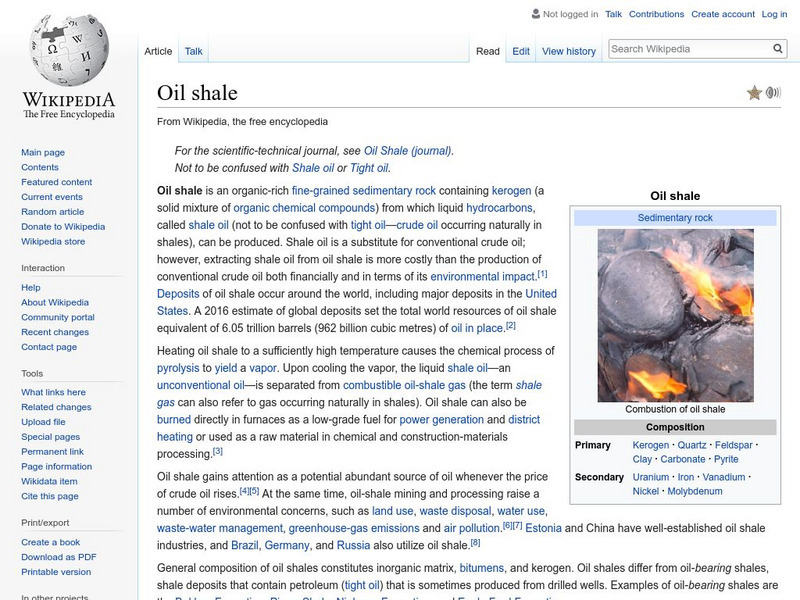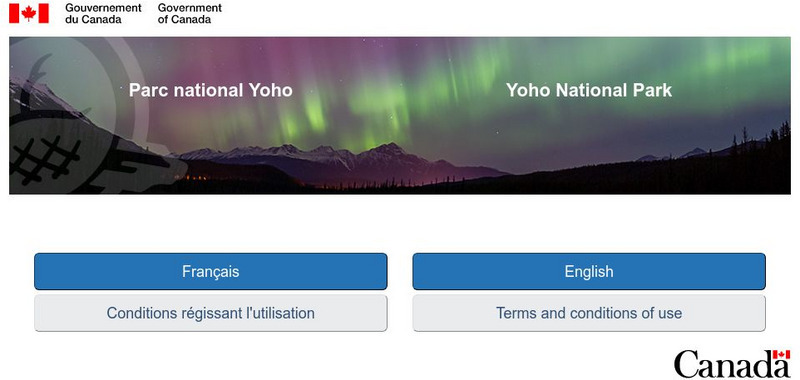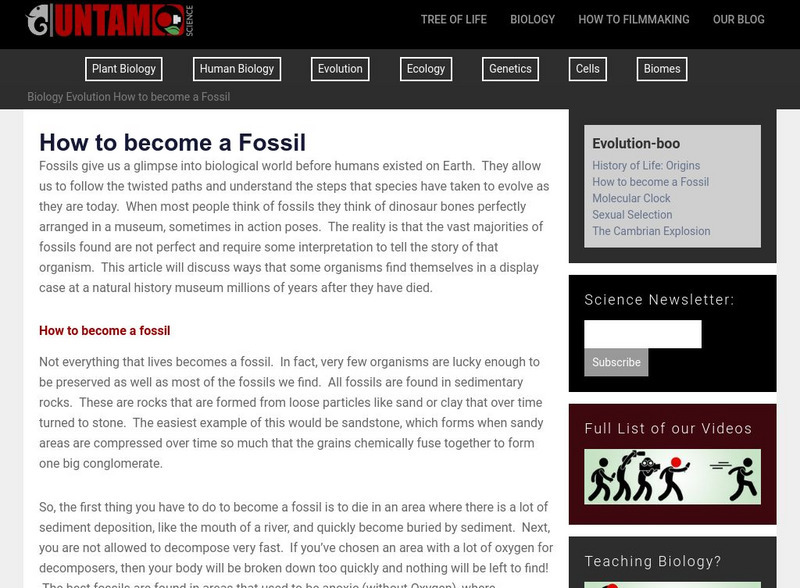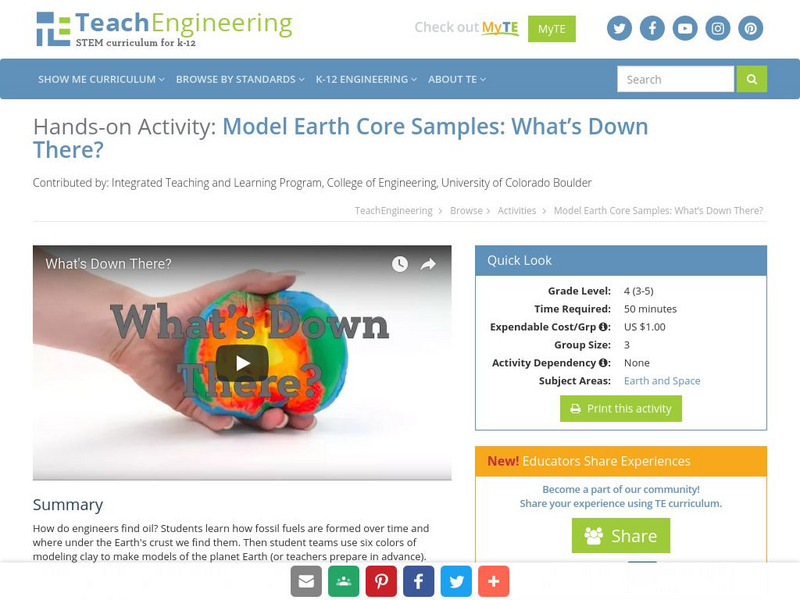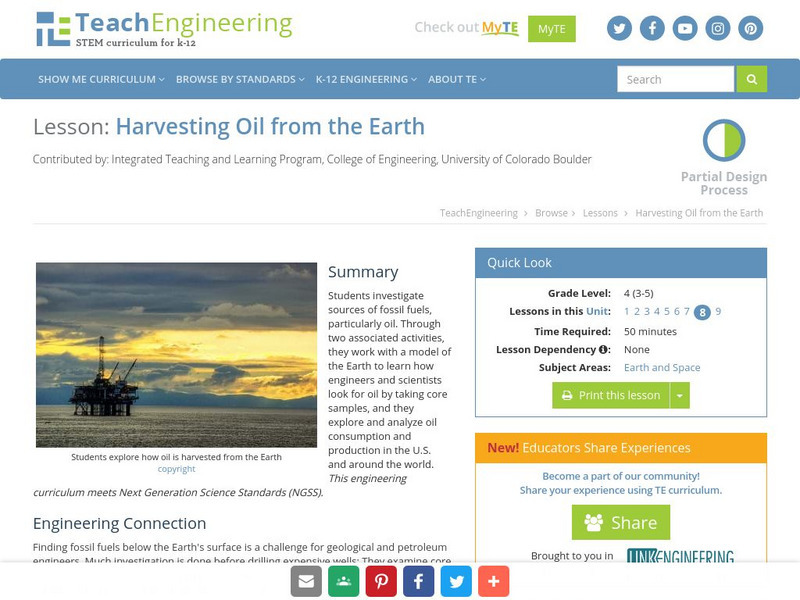Hi, what do you want to do?
ArtsNow
Arts Now Learning: Rocky Movement [Pdf]
In this lesson, 3rd graders will investigate the three types of rocks and personify the formation of each type with movement.
Curated OER
Unesco: Tanzania: Kondoa Rock Art Sites
On the eastern slopes of the Masai escarpment bordering the Great Rift Valley are natural rock shelters, overhanging slabs of sedimentary rocks fragmented by rift faults, whose vertical planes have been used for rock paintings for at...
Curated OER
Sedimentary Rock
This site provides a broad overview of the three different types of rocks. Gives a description about are how they are formed and classified.
Wikimedia
Wikipedia: Oil Shale
When converted to petroleum, oil shale is a valuable resource produced by many countries around the world, including the U.S. Wikipedia discusses the geology, history, economics, and environmental considerations of oil shale.
Other
Speleology: Gypsum Caves
An explanation of how Gypsum Caves form and where they are located. A picture of the Bararossahohle cave in Germany.
Other
Earth Measure: Native American Geometry Designs: Mathematical Landscaping
If you want to plant a class garden, this is a great resource for combining geometry, Native American studies, and rocks.
Science Struck
Science Struck: What Is Graded Bedding?
Explains what graded bedding is and how it forms in sedimentary deposits.
Annenberg Foundation
Annenberg Learner: Interactives: Dynamic Earth: Slip, Slide, & Collide
Looking for more information about plate tectonics and what happens at plate boundaries? This site gives definitions of all plate boundaries as well as animations to help visualize what is happening.
Other
Parks Canada: Yoho National Park: The Burgess Shale
First discovered by Charles Walcott in 1909, the Burgess Shale is a UNESCO World Heritage site containing fossils dating back to the Cambrian period, 505 million years ago. This site provides the history of this area and information on...
Untamed Science
Untamed Science: Biology: Evolution: How to Become a Fossil
Learn about what a fossil is, the different types that scientists use for study, and processes that form them. [2:57]
Utah Education Network
Uen: Nhmu: Our Ancient Earth the Stratigraphy Cup
Activity provides students an opportunity to make a stratigraphy cup.
Quia
Quia: Dig Into Geology
Site provides games and activities that will allow students to have fun, and learn more about rocks and minerals at the same time.
Science Education Resource Center at Carleton College
Serc: Investigating Erosion
In this investigation, students will use sand to build a mountain and then use a straw and watering can to simulate wind erosion and water erosion. Students will make observations and then propose ways to slow the erosion and/or speed...
Indiana University
Indiana Univ. Bloomington:geo Notes: Conodonts: Microfossils of Distinction [Pdf]
Presents some facts about conodonts, extinct eel-like animals whose fossils have been found in Indiana's marine sedimentary rocks. Their important role in geologic research is also discussed.
Other
Caterpillar: Ground Rules: Mining Right for a Sustainable Future [Pdf]
This set of lesson plans was developed to accompany Ground Rules: Mining Right for a Sustainable Future, a documentary film created by Caterpillar and Science North. They introduce students to the various phases involved in mining,...
Curated OER
National Park Service: Geology of Devil's Tower
Welcome to Devil's Tower National Park in Wyoming! This highly interactive website reveals the geological processes behind the formation of this unique natural structure.
Utah Education Network
Uen: Mineral Replacement in Fossil Formation
Activity demonstrates two ways fossils are formed.
University of California
University of California Museum of Paleontology: Uniformitarianism
Read about the pioneers in Earth's geologic history and their discovery of how the process of uniformitarianism shaped the study of evolution.
American Geosciences Institute
American Geosciences Institute: Earth Science Week: Fossil Formation
Learn how fossils are created.
TeachEngineering
Teach Engineering: What's Down There?
During this activity, students will learn how oil is formed and where in the Earth we find it. Students will take a core sample to look for oil in a model of the Earth. They will analyze their sample and make an informed decision as to...
TeachEngineering
Teach Engineering: Harvesting Oil From the Earth
In this lesson, students investigate sources of fossil fuels, particularly oil. Students will learn how engineers and scientists look for oil by taking core samples from a model of the Earth. Also, students will explore and analyze oil...
CK-12 Foundation
Ck 12: Earth Science: Earth History and Clues From Fossils
[Free Registration/Login may be required to access all resource tools.] How scientists can learn information about the past from fossils.
American Museum of Natural History
American Museum of Natural History: Ology Quiz: What Do You Know? Paleontology
Test your knowledge of paleontology by taking a quick quiz.
Other popular searches
- Edible Sedimentary Rocks
- Define Sedimentary Rocks
- Sedimentary Rocks Fossils
- All About Sedimentary Rocks
- Types of Sedimentary Rocks
- Sedimentary Rocks Minerals
- Eating Sedimentary Rocks
- Making Sedimentary Rocks
- Igneous and Sedimentary Rocks
- Sedimentary Rocks, Veneer
- Sedimentary Rocks Veneer
- Sedimentary Rocks Sink Holes





![Arts Now Learning: Rocky Movement [Pdf] Lesson Plan Arts Now Learning: Rocky Movement [Pdf] Lesson Plan](https://static.lp.lexp.cloud/images/attachment_defaults/resource/large/FPO-knovation.png)
